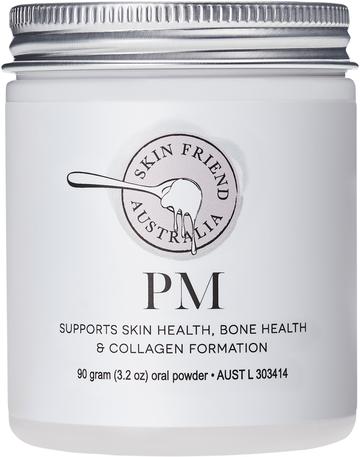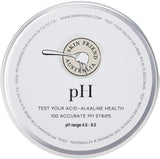pH FAQs
Why do I need to be more alkaline?
Life can be stressful and our modern Western diets – even if they seem healthy – can be high in acid or become acid-producing in the body.
Stress can also cause acid-buildup. Over time, this can cause chronic, low-grade metabolic acidosis which can damage cells in your body, prematurely age us and predispose us to degenerative diseases such as diabetes, high blood pressure and weak bones. (ref 1)
High protein diets can also lead to metabolic acidosis and early signs of kidney damage (shown by a blood test from your doctor). So it’s important to monitor your pH if you are consuming a high protein (or low carb) diet, or any diet that restricts or modifies food intake.
What causes excess acidity in the body?
|
high protein/low carb diets (ketosis) processed foods & refined carbohydrates stress & anxiety drinking coffee and black tea daily alcohol consumption chemicals (cleaning products etc) pollution cigarettes |
dehydration/not drinking enough water parasites (worms) drugs & many medications candida albicans constipation/poor bowel health sugar-rich diets weight loss (releases acids) and excess weight gain |
What is alkalisation?
Alkalisation is the practice of administering highly alkalising foods or supplements for a short period, such as during a detox. Alkalising programs have been used for centuries and doctors traditionally used alkalisation to treat a range of health problems, including gout, salicylate poisoning (aspirin overdose) and heartburn. If you are following an alkalising program, it’s important to monitor your pH so you can stay within the recommended range for optimal health.
What are the health benefits of acid-alkaline balance?
Your body’s acid-alkaline balance is important for good health, and being consistently slightly alkaline (by eating the right foods) can help to:
|
create clear, healthy skin brighten your eyes improve eczema/dermatitis reduce allergies and sensitivities promote bone health boost energy levels & mental clarity promote healthy weight-loss |
prevent candida albicans improve immune system health boost digestion & gut health reduce premature skin ageing improve gout & heartburn symptoms prevent bad breath reduce body odour, & more |
Do I have to avoid all acidic foods to be healthy?
No. The healthy foods that exert an acid-producing effect (such as quality protein and wholegrain carbohydrates) can be enjoyed in moderation. You are striving for acid-alkaline balance, not a total alkaline diet that could be nutritionally incomplete. If you are avoiding food groups such as dairy, supplementation is important to prevent deficiencies.
About the Skin Friend pH kit:
Skin Friend pH contains 100 accurate wide-range pH strips to quickly and easily measure the pH of your saliva and urine (from pH 4.5 to pH 9.0). Test your pH at home, anytime, and monitor your acid-alkaline balance. It only takes 15 seconds.
What does pH mean?
The word pH means ‘potential of hydrogen' and the pH of 1.0 is highly acidic, a pH of 14 is highly alkaline, and 7.0 is neutral.
How to use the Skin Friend pH kit
First use: Using clean, dry hands, remove the pH strips from the plastic packaging and place them into the metal tin. Keep in a dry place away from moisture.
How often do I test my pH? Your acid and alkalinity levels fluctuate throughout the day depending on what you eat. So ideally, test your pH before eating or at least 30 minutes after eating. Initially – for a couple of weeks – you can do the test twice daily. For example, first thing in the morning (before food) and again in the afternoon before eating (or at least 30 minutes after eating). Then you can test once a day or when convenient. Record your results at the end of this PDF (see ‘pH Diary’).
TO TEST URINE
Briefly place the tip (coloured portion) of a pH strip into the urine stream. Remove, then wait 15 seconds and compare your results using the pH colour chart (on the base of the tin).
TO TEST SALIVA
Do not eat, drink or clean your teeth for at least 30 minutes before testing. Do not put the pH strip directly into your mouth. Briefly dip the coloured tip of a pH strip into saliva which has been placed onto a spoon. Wait 15 seconds then compare your results using the pH colour chart (see base of the tin).
IDEAL PH
Urine: For healthy people, the ideal pH for urine is between 6.75 and 7.25 (around neutral or slightly alkaline). However, if you have health problems associated with excess acids, such as eczema, skin problems, gout, arthritis, or salicylate- or chemical- sensitivity, aim for a urine pH of 7 to 7.5. Do not aim for higher. Tip: Aim for a healthy balance. If your reading is pH 8 or above, reduce the dosage of your alkalising supplements.
Saliva: aim for a reading between 7.0 to 7.5.
How to use and read the strips
Using the chart on the back of the tin (see image, above), hold your used test strip near the chart and check the colour strip results. If you are unsure of your results, or which square is most accurate, use the bottom indicator square for the reading.
If it indicates you are too acidic, take a dose of Skin Friend PM on an empty stomach and re-test in a few hours. As Skin Friend PM is highly alkaline, you can have it 30 minutes before food to improve your digestion and promote acid-alkaline balance. Find more about Skin Friend PM here.
Read 'How does alkalisation help eczema?
About the author: For the past 19 years nutritionist and author Karen Fischer has specialised in eczema and skin health. For Karen's Eczema Diet and Eczema Detox programs and additive-free eczema supplements visit skinfriend.com or click on the images, below.
Shop the story
References
1. Carnauba, R.A., Baptistella, A.B., Paschoal, V. and Hübscher, G.H., 2017. Diet-Induced low-grade metabolic acidosis and clinical outcomes: A review. Nutrients, 9(6), p.538.






